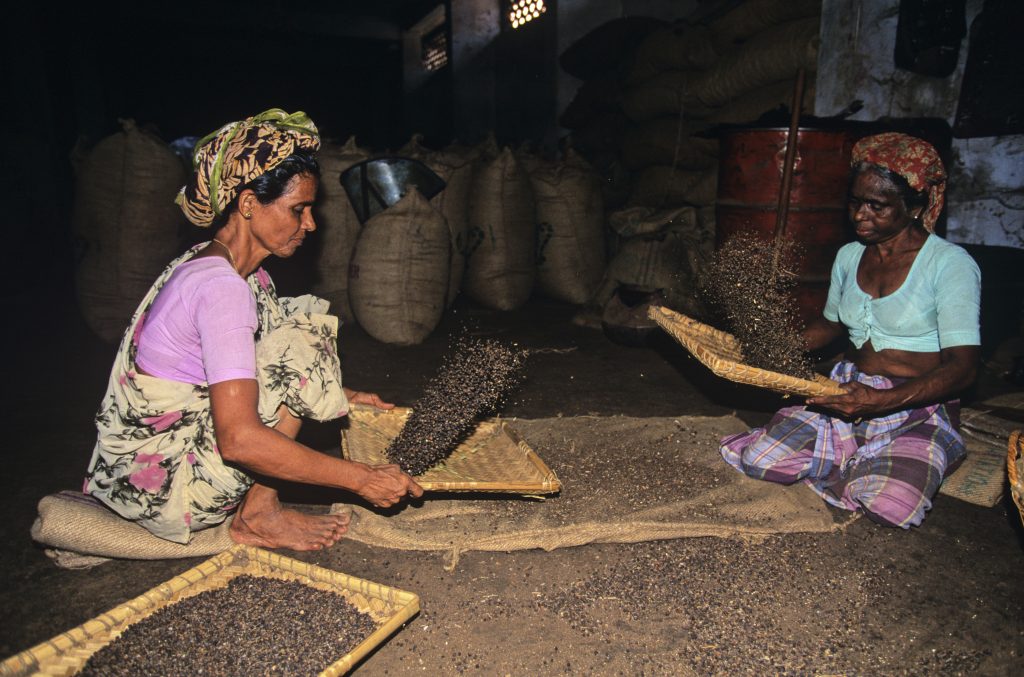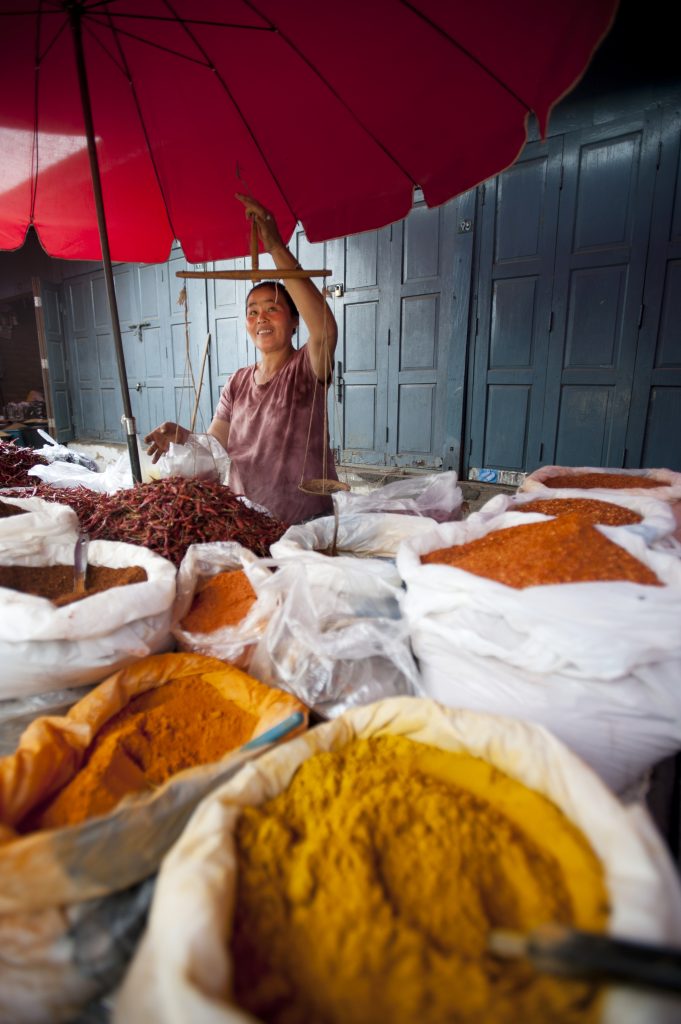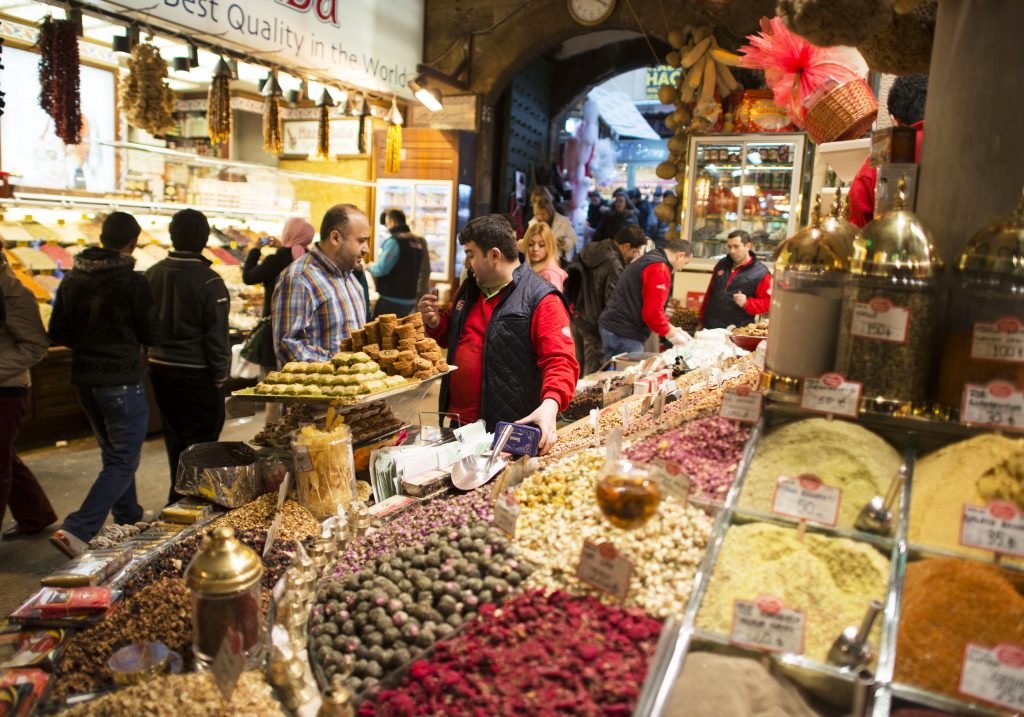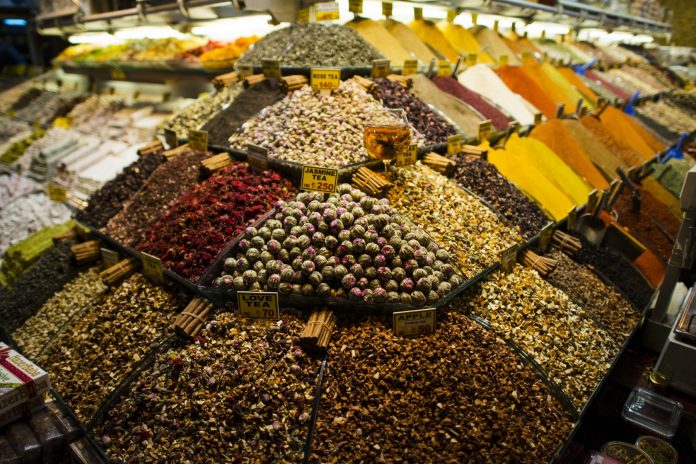The lure of Asia’s titillating treasures
Text P.N. Ravindran
“Among the crops used by humankind, the history of spices is perhaps the most adventurous and the most romantic. In the misty distant past, when the primitive man was roaming around the forests in search of food and shelter, he might have tested and tasted many plants, might have selected those that were aromatic and spicy as of special value, and used them to propitiate his primitive gods to save him from the raging storm, thunder, lightning and rain.
“Out of the darkness of that distant past blossomed early human civilizations. In all civilizations, the aromatic plants were given special status and many were probably used as offerings to gods. Gradually, man might have started using them for curing various illnesses and in the course of time, spices and aromatic plants had acquired magical associations about their properties.” (Ravindran, 2002)
From the dawn of civilisation, spices have been eagerly sought after. The seafarers of the ancient lands braved the raging waves and winds to go to distant places in search of spices and aromatics. The discovery of the fairyland of spices – Indonesia’s “Spice Islands” – was one of the major aims of many circumnavigations witnessed by the Renaissance.

Such navigational expeditions and discoveries opened up the flora and fauna of many countries to the rest of the world; the most notable among them was the “Columbian exchange”, following the discovery of the American continent by Christopher Columbus (1451–1506) and Amerigo Vespucci (1454–1512).
Columbus went in search of India and black pepper, but discovered America and red pepper. The plant and seed exchanges that followed the discovery of new lands dramatically changed the cuisines of the world and the medicines too, thereby significantly reshaping people’s food baskets and medicine chests.
While the recorded history of the use of spices goes back only about 5,000 years, to ancient Egypt or, at the earliest, to the Indus Valley Civilisation, its unrecorded history likely stretches back more than 50,000 to 100,000 years, when primitive humans foraged forests in search of food.
However, the natural history of spice plants goes back about 60 or 70 million years, to the Palaeozoic and Eocene epochs of the Tertiary Period, when modern angiosperms started evolving. Thereafter, plants had to evolve special phytochemical mechanisms to keep away the phytovores (animals that feed on tree leaves and trunks), and in response to such demand, the whole metabolic machinery for the biosynthesis of secondary metabolites came into existence. Thus, the properties of spices and aromatic plants that make them attractive and useful is the legacy that has been handed down through millions of generations from that distant past.
Spices were the most valuable among the folk medicinal plants. While their use in food probably became widespread much later, it was their medicinal properties for which spices were greatly valued at first. But the discovery of the addition of pepper, ginger, cardamom or cinnamon to food was a revelation with a tremendous cultural impact. It not only made a difference to flavour, but also allowed food to last longer, with the use of spices quickly becoming popular as a means of preserving meat. Black pepper, known as “black gold” in ancient times, became a highly valued spice, which saw disparate European powers vying for control over trade routes.
“Phytochemicals are legacies of multiple co-evolutionary races between plants and their enemies – parasites, pathogens and herbivores. These chemical cocktails are the plants’ recipes for survival. Man is exploiting these cocktails to enhance the flavour and taste of his foods and to prevent their spoilage and to protect himself from various illnesses.” (Paul Sherman, Samuel Flaxman, 2001)
In modern times, the perception of spices has shifted. A modern picture is evocatively painted by author John William Parry in the prologue of his book, Spices: Their Morphology, Histology and Chemistry: “In a brightly illuminated and well organised groceteria of a local departmental store, we noticed a woman shopper gazing at rows of neatly arranged, colourful, sifter type containers. The little tins were filled with cinnamon, cloves, ginger, nutmeg, mace, pepper, paprika, sage, marjoram and all the other delightfully aromatic and pungent spices, which help milady to please her family and friends with the choicest of delectable dishes.”

It is difficult for modern housewives or chefs to appreciate the extent of the influence spices like black pepper, ginger and cinnamon among many others have had on nations and peoples during man’s chequered history.
“Wars were fought kingdoms were built and demolished, cities grew, flourished and declined – the destiny of humankind was influenced so much – all for the sake of spices.” (Ravindran, 2000)
In ancient times, Arab traders had total control over the spice trade – and they kept the origins of these precious commodities a closely guarded secret. Spices were carried either over land routes, known today as the Silk Road, or via ancient sea routes, both finally culminating in the lands of the Mediterranean Sea. The Roman Empire was the destination point of the caravans and spice routes, and from there, they were disseminated to other regions.
In AD 45, a Greek mariner by the name of Hippalus discovered the secret of the monsoon wind systems in the Indian Ocean and, using this knowledge, reached the Malabar Coast. Following this, the Romans started regular trade with the peoples of the Malabar Coast, becoming masters of the spice trade. Large quantities of spices were taken to Rome, and the streets of Venice were filled with the heady fragrance of Asian spices.
By the fall of Rome in AD 478, more than four centuries later, the control of the spice trade was passed back to the Arabs once again, where the next thousand years bore witness to the inexorable rise of the Arab spice trade, which flourished into what is recorded in history as the “golden age” of Arabian commerce.
Meanwhile, the European countries were anxiously trying to discover the fabled spice lands, and the Renaissance saw courageous mariners mount explorations of the far-flung oceans and lands. One such expedition, captained by Christopher Columbus, went in search of the spice lands of the East, but reached the American continent instead, thereby marking the end of the Middle Ages and the beginning of the Modern Age. Another expedition, under Portuguese explorer Vasco da Gama (c. 1460s–1524) and with the help of a captured Arab trader, reached the Malabar Coast of southwest India. The date was May 20, 1498, just another day for the Indians, but on that day, unknown to da Gama himself, he was to land near Kozhikode, creating history and catapulting the Indian subcontinent into the Modern Age.

The next 200 years saw the European hegemony of the spice trade, and like waves, they came into India one after another – the Portuguese, the Spanish, the French, the Dutch and the English. The Spanish soon withdrew based on an agreement with Portugal, and the Dutch defeated the Portuguese and ousted them from many of their strongholds. But the Dutch were then themselves defeated when the army of the powerful king of Travancore, Marthanda Varma, won the Battle of Colachel in 1741.
Another hugely significant event happened on December 31, 1600, with the establishment of the British East India Company. About this fateful day, authors Larry Collins and Dominique Lapierre write in Freedom at Midnight, their book on India’s struggle for independence: “Sometimes history’s most significant accomplishments have the most banal of origins. Great Britain was set on the road to the great colonial adventure for five miserable shillings. They represented the increase in price of a pound of pepper proclaimed by the Dutch privateers who controlled the spice trade….”
With 125 shareholders in the original joint-stock company, the British East India Company soon expanded and transformed to become the most noteworthy creation of the Age of Imperialism – the British Raj. The British established their presence with a harsh hand, ruthlessly using force, treachery and all other foul means to bully their way into monopolising the spice trade. The rest, as they say, is history.
The discovery of the use of spices is generally regarded as the greatest revolution after the invention of agriculture. The pungent oriental spices were the greatest boon to Western cuisines, and as a result, “dishes took on a fullness of flavour previously unknown; beverages glowed with a redolent tang; and life experienced a new sense of warmth and satisfaction”. (Ravindran, 2004)
For more stunning stories and photographs from this issue, check out Asian Geographic Issue 110.











